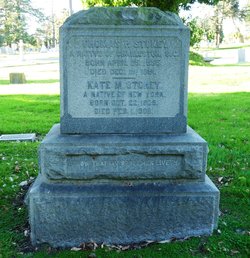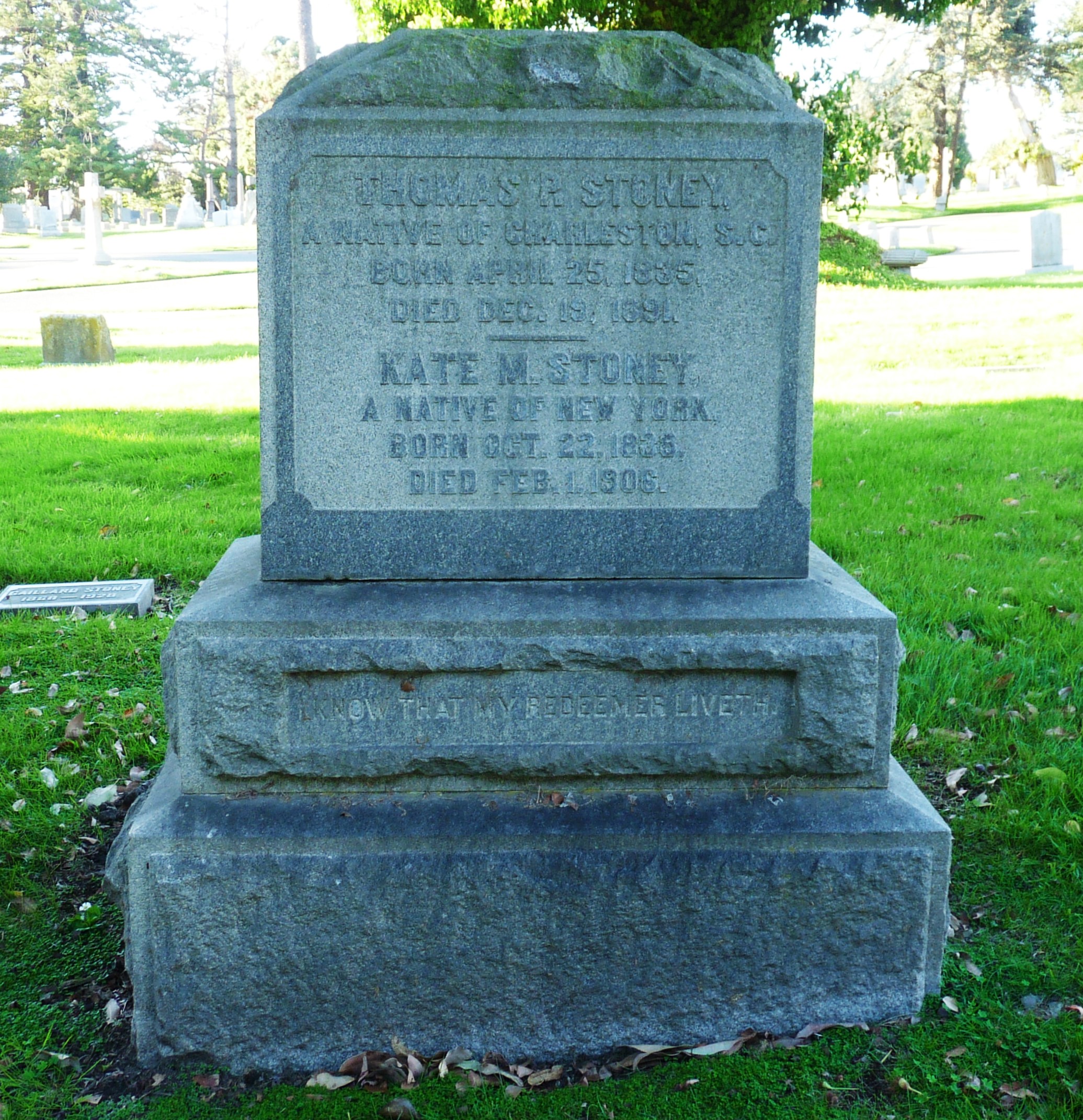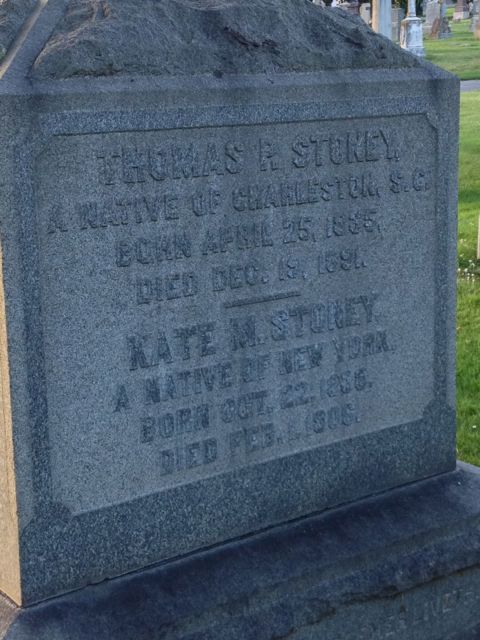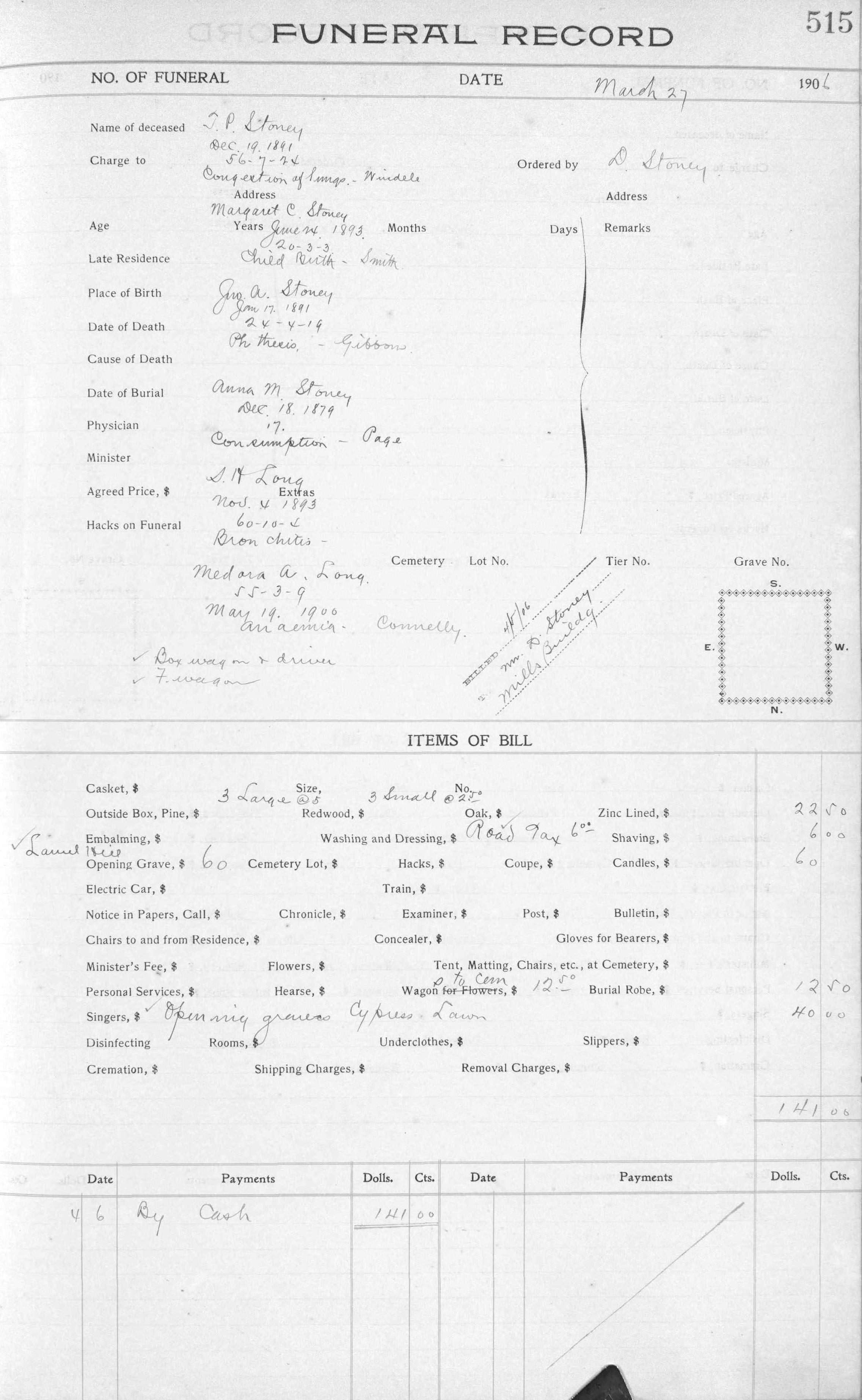THOMAS PORCHER STONEY, a direct descendant of Pierre Gaillard, a French Huguenot who immigrated to this country upon the revocation of the Edict of Nantes in 1685, was born on a rice plantation near Charleston, South Carolina, called Back River and owned by his father, Pierre Gaillard Stoney, who was one of the wealthy plantation owners in South Carolina. He was educated at the South Carolina College at Columbia, South Carolina, and from there finished his course in law at the University of Virginia in 1855. In 1856 he came, via the Isthmus of Panama, to San Francisco and from there to Napa, where he began the practice of law.
In 1860 he married Kate M. Allen, a of Joseph Allen, a successful merchant in New York, and remained in Napa until the breaking out of the Civil war in 1861, when he left for the South and fought on the southern side under General Beauregard until the war was over. His wife followed him to the South and lived with his people throughout the war.
After the war he went North with his wife to New York and Vermont, her home and that of her ancestors, and in 1868 returned to Napa, California, where, under the stringent rules of the Government, he was not entitled to practiced law, having fought on the side of the Confederacy. His ability soon appealed to Messrs. Hartson and Burnell, leading attorneys of Napa, who made him a silent part partner until the inhibition against Seccessionists was removed and in 1872 he was elected county judge of Napa County and reelected in 1876.
In 1879 he was nominated by the democratic convention to the office of associate justice of the Supreme Court of the State of California, but was defeated, owing to the fact that he was not endorsed by Denis Kearny party, called the Honorable Bilks, who held the balance of power.
Upon the adoption of the Constitution of 1879 he was appointed by the governor a member of the commission to revise the codes to conform to the new constitution, and upon completion of that work entered into partnership with Judge John A. Stanly and George R. B. Hayes in the practice of law in San Francisco under the firm name of Stanley, Stoney and Hayes, with offices at 604 Clay Street, at the corner of Clay and Montgomery streets, and later, in 1888, over the London, Paris and American Bank at Sansome and Sutter streets. As a member of that firm he made his reputation as a leading lawyer by his arguments before the Supreme Court, in many cases involving intricate legal questions, due to his analytic mind and concise reasoning.
He died December 18, 1891, leaving a widow, Kate M. Stoney, now deceased; Kate W. Stoney, a daughter; and two sons, Gaillard and Donzel Stoney, now practicing attorneys of San Francisco.
He was successful in the Law owning to his sterling integrity and his power of analytical presentation of legal points and briefs submitted to the Supreme Court. He was a man of personal magnetism and took an especial interest in the young lawyers, such as Garrett W. McEnerney, Denis Spencer and many others who sought his judgment in solving intricate and novel legal problems, and he was ever ready to drop his work in order to advise young attorneys, who, now prominent in the law, together with those of the old school now will survive him, hold him in high commemoration and esteem.
- "The San Francisco Bay Region, Vol. 3" by Bailey Millard; Published by The American Historical Society, Inc., 1924
THOMAS PORCHER STONEY, a direct descendant of Pierre Gaillard, a French Huguenot who immigrated to this country upon the revocation of the Edict of Nantes in 1685, was born on a rice plantation near Charleston, South Carolina, called Back River and owned by his father, Pierre Gaillard Stoney, who was one of the wealthy plantation owners in South Carolina. He was educated at the South Carolina College at Columbia, South Carolina, and from there finished his course in law at the University of Virginia in 1855. In 1856 he came, via the Isthmus of Panama, to San Francisco and from there to Napa, where he began the practice of law.
In 1860 he married Kate M. Allen, a of Joseph Allen, a successful merchant in New York, and remained in Napa until the breaking out of the Civil war in 1861, when he left for the South and fought on the southern side under General Beauregard until the war was over. His wife followed him to the South and lived with his people throughout the war.
After the war he went North with his wife to New York and Vermont, her home and that of her ancestors, and in 1868 returned to Napa, California, where, under the stringent rules of the Government, he was not entitled to practiced law, having fought on the side of the Confederacy. His ability soon appealed to Messrs. Hartson and Burnell, leading attorneys of Napa, who made him a silent part partner until the inhibition against Seccessionists was removed and in 1872 he was elected county judge of Napa County and reelected in 1876.
In 1879 he was nominated by the democratic convention to the office of associate justice of the Supreme Court of the State of California, but was defeated, owing to the fact that he was not endorsed by Denis Kearny party, called the Honorable Bilks, who held the balance of power.
Upon the adoption of the Constitution of 1879 he was appointed by the governor a member of the commission to revise the codes to conform to the new constitution, and upon completion of that work entered into partnership with Judge John A. Stanly and George R. B. Hayes in the practice of law in San Francisco under the firm name of Stanley, Stoney and Hayes, with offices at 604 Clay Street, at the corner of Clay and Montgomery streets, and later, in 1888, over the London, Paris and American Bank at Sansome and Sutter streets. As a member of that firm he made his reputation as a leading lawyer by his arguments before the Supreme Court, in many cases involving intricate legal questions, due to his analytic mind and concise reasoning.
He died December 18, 1891, leaving a widow, Kate M. Stoney, now deceased; Kate W. Stoney, a daughter; and two sons, Gaillard and Donzel Stoney, now practicing attorneys of San Francisco.
He was successful in the Law owning to his sterling integrity and his power of analytical presentation of legal points and briefs submitted to the Supreme Court. He was a man of personal magnetism and took an especial interest in the young lawyers, such as Garrett W. McEnerney, Denis Spencer and many others who sought his judgment in solving intricate and novel legal problems, and he was ever ready to drop his work in order to advise young attorneys, who, now prominent in the law, together with those of the old school now will survive him, hold him in high commemoration and esteem.
- "The San Francisco Bay Region, Vol. 3" by Bailey Millard; Published by The American Historical Society, Inc., 1924
Family Members
Advertisement
Explore more
Sponsored by Ancestry
Advertisement





















